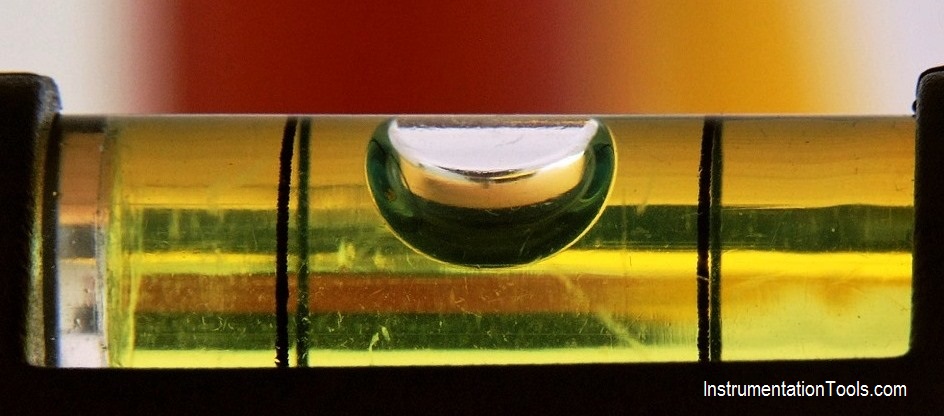A spirit level, bubble level or simply a level is an instrument designed to indicate whether a surface is horizontal (level) or vertical (plumb).
Different types of spirit levels may be used by carpenters, stonemasons, bricklayers, other building trades workers, surveyors, millwrights and other metalworkers, and in some photographic or video graphic work.
Spirit Level
Construction
Early tubular spirit levels had very slightly curved glass vials with constant inner diameter at each viewing point. These vials are incompletely filled with a liquid, usually a colored spirit or alcohol, leaving a bubble in the tube.
They have a slight upward curve, so that the bubble naturally rests in the center, the highest point. At slight inclinations the bubble travels away from the marked center position. Where a spirit level must also be usable upside-down or on its side, the curved constant-diameter tube is replaced by an uncurved barrel-shaped tube with a slightly larger diameter in its middle. Alcohols such as ethanol are often used rather than water.
Alcohols have low viscosity and surface tension, which allows the bubble to travel the tube quickly and settle accurately with minimal interference from the glass surface. Alcohols also have a much wider liquid temperature range, and won’t break the vial as water could due to ice expansion. A colorant such as fluorescein, typically yellow or green, may be added to increase the visibility of the bubble.
A variant of the linear spirit level is the bull’s eye level: a circular, flat-bottomed device with the liquid under a slightly convex glass face with a circle at the center. It serves to level a surface across a plane, while the tubular level only does so in the direction of the tube.
Calibration
To check the accuracy of a carpenter’s type level, a perfectly horizontal surface is not needed. The level is placed on a flat and roughly level surface and the reading on the bubble tube is noted. This reading indicates to what extent the surface is parallel to the horizontal plane, according to the level, which at this stage is of unknown accuracy.
The spirit level is then rotated through 180 degrees in the horizontal plane, and another reading is noted. If the level is accurate, it will indicate the same orientation with respect to the horizontal plane. A difference implies that the level is inaccurate.
Adjustment of the spirit level is performed by successively rotating the level and moving the bubble tube within its housing to take up roughly half of the discrepancy, until the magnitude of the reading remains constant when the level is flipped.
A similar procedure is applied to more sophisticated instruments such as a surveyor’s optical level or a theodolite and is a matter of course each time the instrument is set up. In this latter case, the plane of rotation of the instrument is levelled, along with the spirit level. This is done in two horizontal perpendicular directions.
